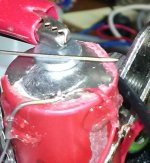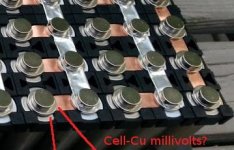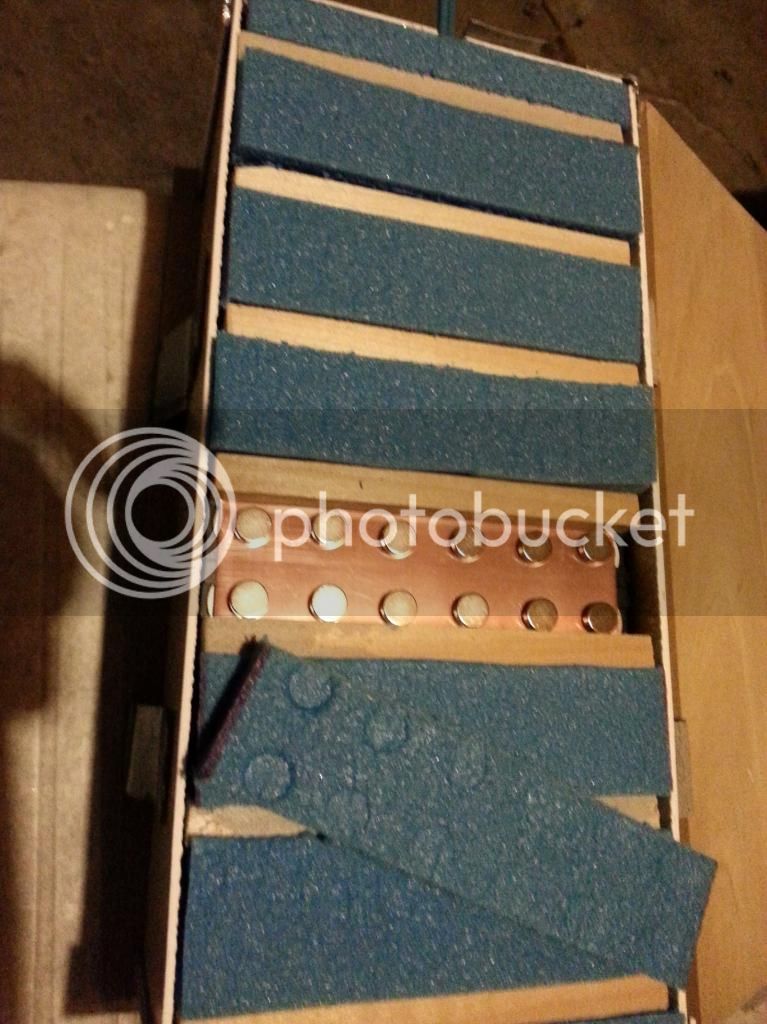radad said:I'm finally understanding what your saying, I think. So since that is the case there is no reason to have the busbar directly on top of the battery terminal. Having a nib there instead(with the bus on top of the nib like my original idea) has many advantages. Its stronger, the busbar isn't bent all up, less likely to create a short and I can remove the battery wrapper cause my current batch of spacers is a real tight fit on the 20r batteries. If your right dnmun, and I have no reason to doubt, the nib's will carry all the parallel current without heating up at all. I'm ordering some nickel strips tonight. I'm getting closer and closer!
Synon said:Guess I'm not completely understanding yet. How would you balance such a pack?
According to the clarification in post Aug 13, 2014 7:21 pm dnmun means in deed to have the (many) serial links first, and only weak parallel links for the small balancing currents (or half strong error currents when one cell died) - that what I meaned with "p=6 serial connections" for each of the 13+1 stages in radad's case. So, leaving out the issue of the far end connectors, this means that for a 6p14s pack you'd have 6*13=78 short ~2cm serial link strips with 2 magnets each (or 1 magnet and 1 solder contact...) and then some 13 (thin) wires or strips (soldered/welded) in lateral/parallel direction across the middle of the short serial links or so. instead of the 2x13=26 (+2) longer parallel strips, which radad has now, and 13 short serial bridges.
Is that what you want to make now, radad? With 78 short strips and 2 or 4 magnets each - all loose - this may be a like herding cats.
The "many serial links first" method makes more efforts as already mentioned by dnmun, but indeed distributes the current over more links - thus its indeed good for very high current packs; or one can use rather thin strips/wires — when soldering all contacts. For magnets yet one needs a rather huge strip area anyway and <=1C EV packs with 40..80mOhm cells (worse with aging) are rather uncritical regarding the link resistance anyway - its all about the question of the magnet contact resistance.
Both link methods yet are indifferent regarding the question of "no reason to have the busbar directly on top of the battery terminal": So or so the same full current must somehow go out of the cell into the link strip - no matter if the strip then goes serial or parallel. The magnet contacts as it are the critical spots. The direct nib-to-pole contact perhaps is stronger, but then the problem with the strip on top. Nickel strips (usually nickel covered steel strips) are somewhat ferromagnetic, but it may be not enough; a second magnet makes it complicated ... welding magnets to the strips ... We'd need some first rough milliohm resistance measurement data of the (ethanol cleaned) magnet contact options to get some overall impression.
Well, combining that — perhaps intersting could be a solution, where the many-serial-links-first method is used however to get a full flexible but rather cohesive "LEGO" assembly where each of the S*P short nickel strips ~20mm x 5mm are welded or soldered onto the minus pole of one cell and welded to one disc NIB magnet ~8mmx3mm at a distance so that the magnet fits on the next cells plus pole (Or inverse: fix strip on plus with welding only, magnet on minus). Thus one has S*P identical units to simply click together via cell holders and one pre-fixed strip+magnet per cell (which is rather stable compared to 2 magnets per strip), and then only solder some small parallel wire laterally over the middle of the strips ...








